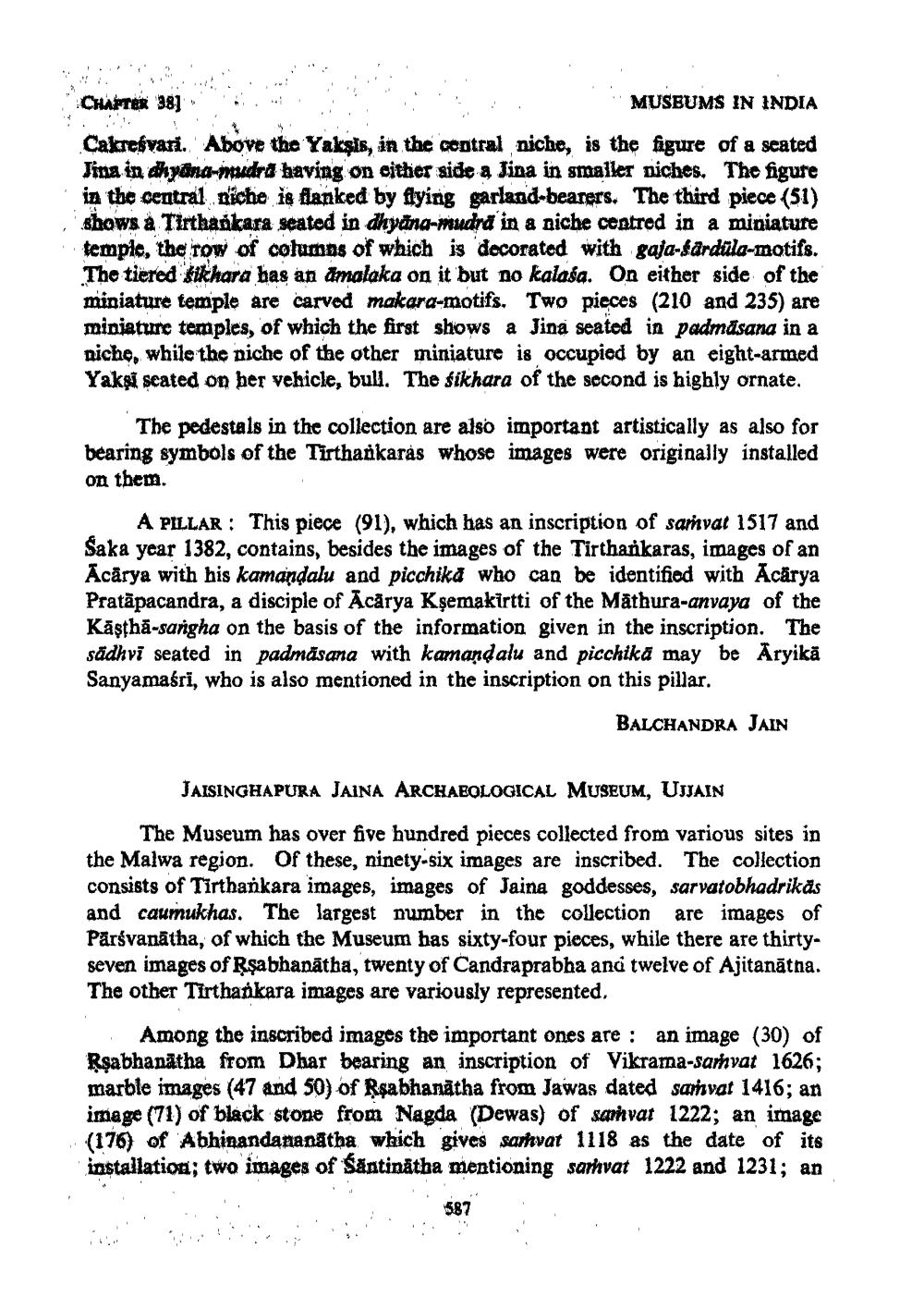________________
CHAPTER 38]
MUSEUMS IN INDIA
Cakreśvari. Above the Yaksis, in the central niche, is the figure of a seated Jina in dhyana-mudra having on either side a Jina in smaller niches. The figure in the central niche is flanked by flying garland-bearers. The third piece (51) shows a Tirthankara seated in dhyana-mudra in a niche centred in a miniature temple, the row of columns of which is decorated with gaja-sardula-motifs. The tiered sikhara has an amalaka on it but no kalasa. On either side of the miniature temple are carved makara-motifs. Two pieces (210 and 235) are miniature temples, of which the first shows a Jina seated in padmāsana in a niche, while the niche of the other miniature is occupied by an eight-armed Yaksi seated on her vehicle, bull. The sikhara of the second is highly ornate.
The pedestals in the collection are also important artistically as also for bearing symbols of the Tirthankaras whose images were originally installed on them.
A PILLAR: This piece (91), which has an inscription of samvat 1517 and Saka year 1382, contains, besides the images of the Tirthankaras, images of an Acarya with his kamandalu and picchika who can be identified with Acarya Pratapacandra, a disciple of Acarya Kşemakirtti of the Mathura-anvaya of the Kāṣṭhā-sangha on the basis of the information given in the inscription. The sadhvi seated in padmasana with kamandalu and picchikā may be Aryikā Sanyamaśri, who is also mentioned in the inscription on this pillar.
BALCHANDRA JAIN
JAISINGHAPURA JAINA ARCHAEOLOGICAL MUSEUM, UJJAIN
The Museum has over five hundred pieces collected from various sites in the Malwa region. Of these, ninety-six images are inscribed. The collection consists of Tirthankara images, images of Jaina goddesses, sarvatobhadrikās and caumukhas. The largest number in the collection are images of Pārsvanatha, of which the Museum has sixty-four pieces, while there are thirtyseven images of Rṣabhanatha, twenty of Candraprabha and twelve of Ajitanātna. The other Tirthankara images are variously represented.
Among the inscribed images the important ones are: an image (30) of Rṣabhanatha from Dhar bearing an inscription of Vikrama-samvat 1626; marble images (47 and 50) of Rsabhanatha from Jawas dated samvat 1416; an image (71) of black stone from Nagda (Dewas) of samvat 1222; an image (176) of Abhinandananatha which gives samvat 1118 as the date of its installation; two images of Santinatha mentioning sarhvat 1222 and 1231; an
587




